Abstract
1. Responses to neurotensin have been investigated in conscious calves 2-5 weeks after birth given continuous I.V. infusions of the peptide for 15 min (5 pmol. kg-1 . min-1). 2. In control calves the concentration of the peptide in the arterial plasma had risen by 160 +/- 10 pmol/l at the end of the infusion,. after which it fell exponentially (t1/2: 1.4 min). 3. This dose of neurotensin produced no significant change in mean heart rate, aortic blood pressure, plasma gastrin or glucose concentration. 4. It was found that neurotensin could produce a pronounced rise in the concentration of both insulin and pancreatic polypeptide (PP) in the arterial plasma, together with a much smaller rise in pancreatic glucagon concentration. 5. Each of these three pancreatic endocrine responses was found to be glucose-sensitive within the range ca. 5.0-9.0 mmol/l. Hyperglycaemia potentiated insulin release and inhibited release of PP and glucagon. 6. The results are discussed in relation to the findings of other workers in other species.
Full text
PDF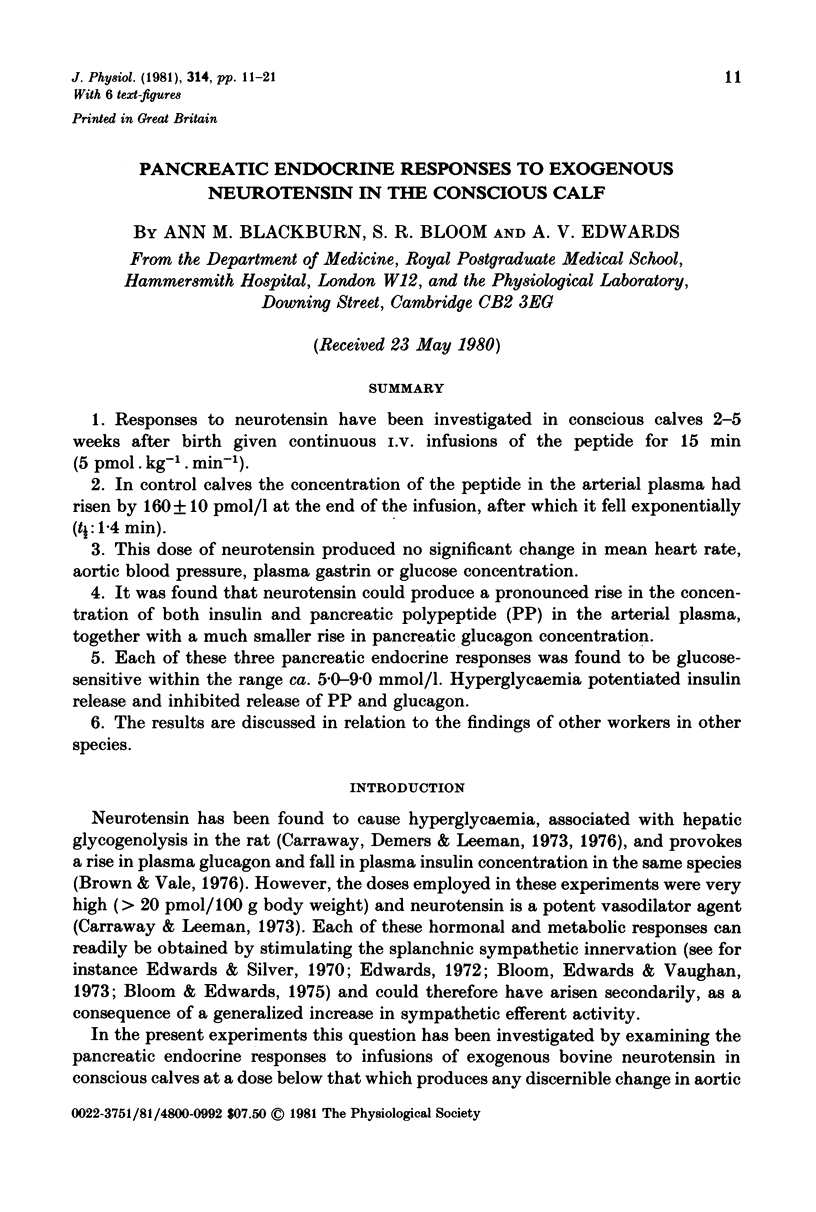
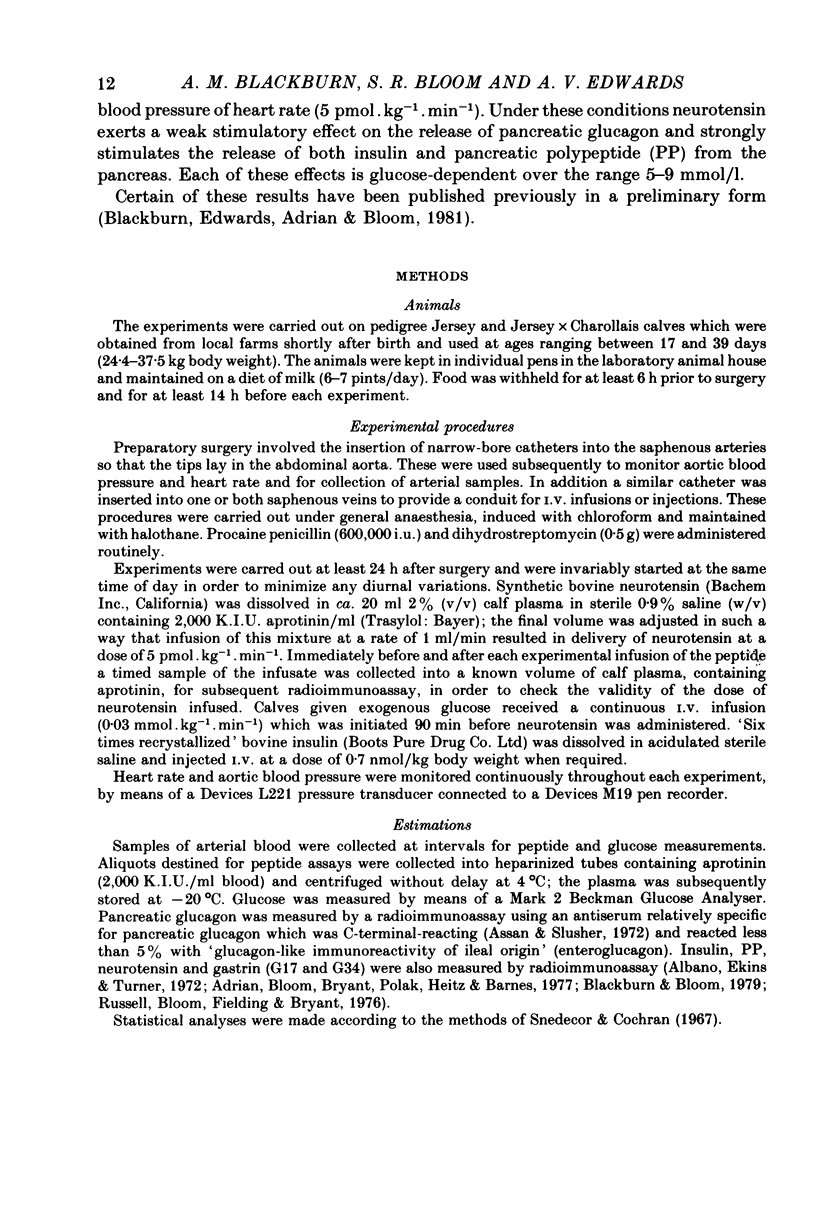
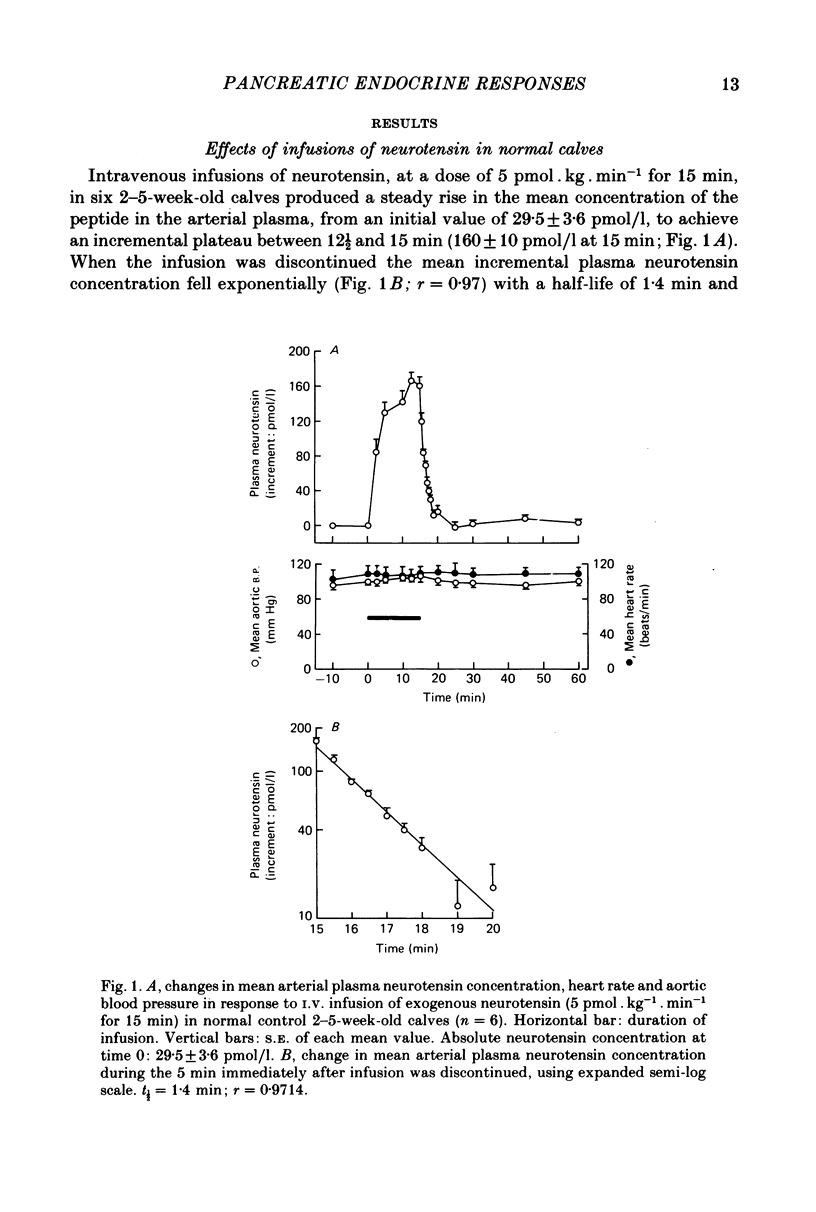
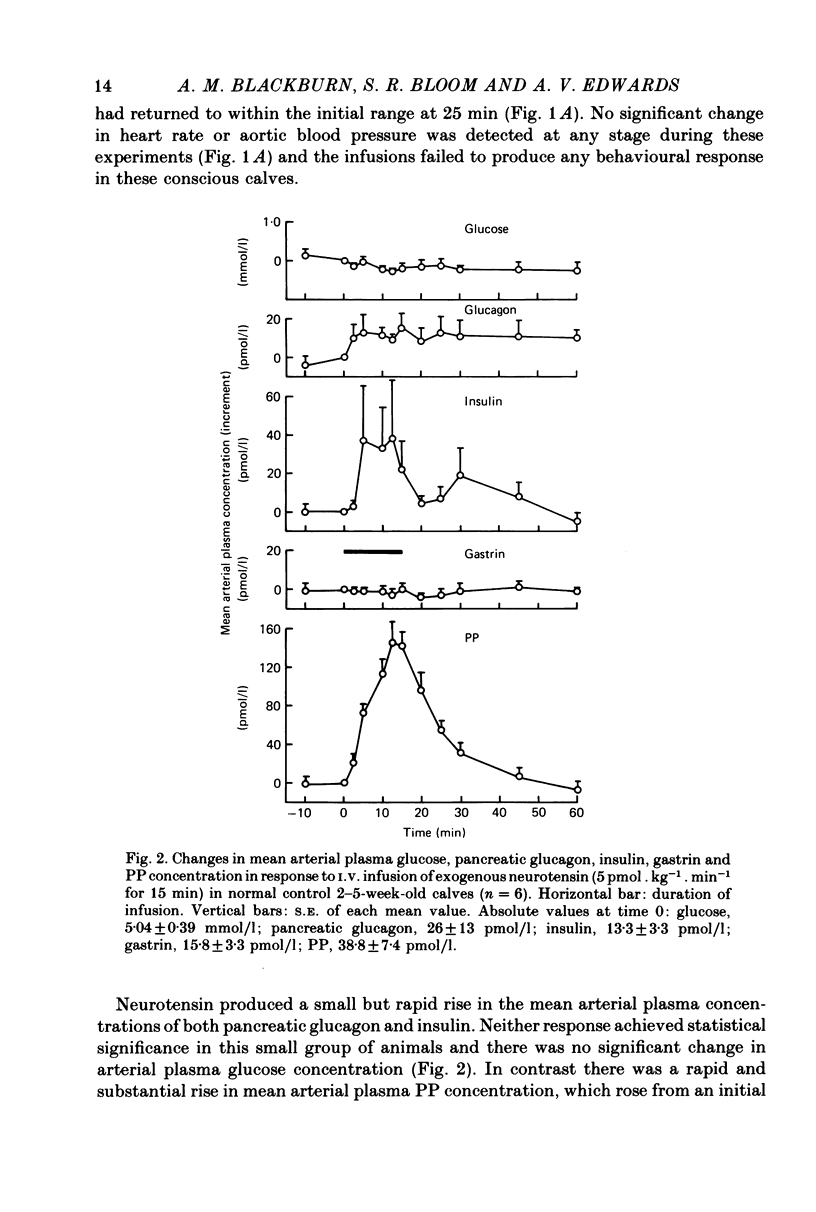
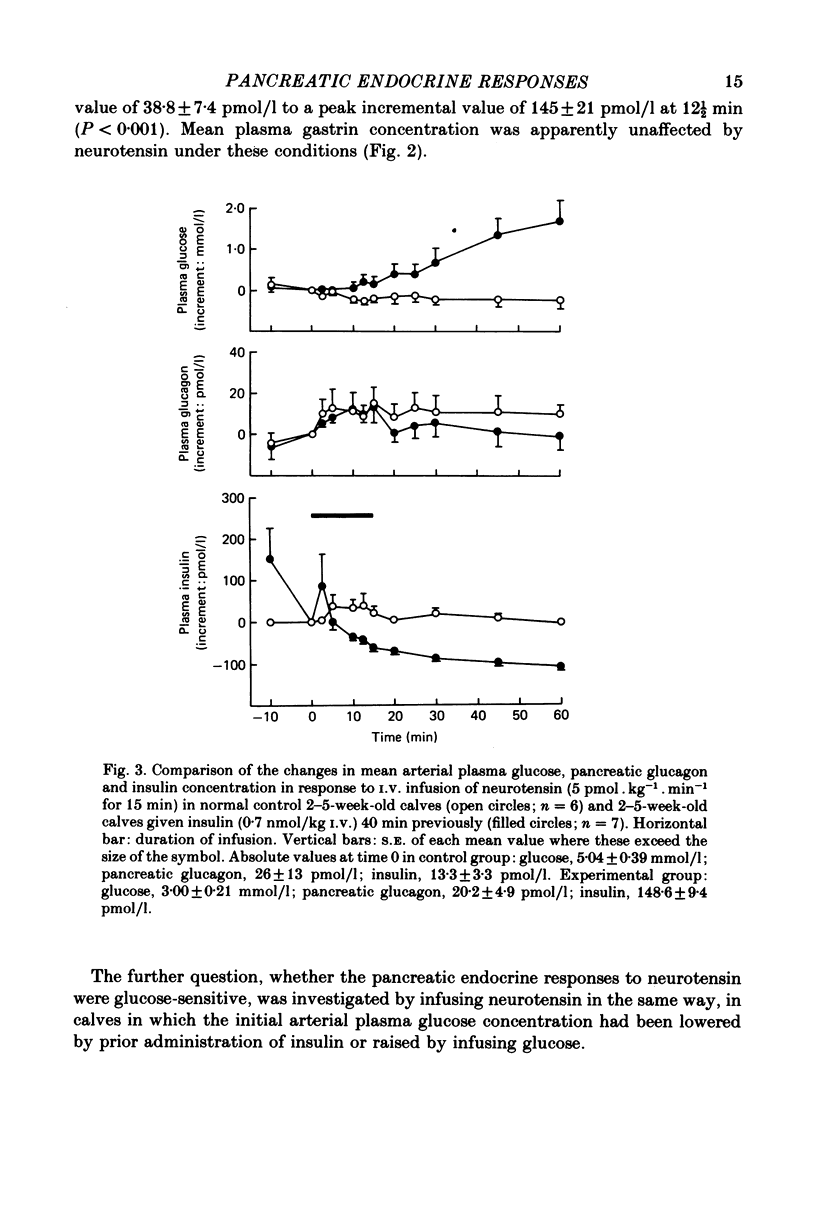
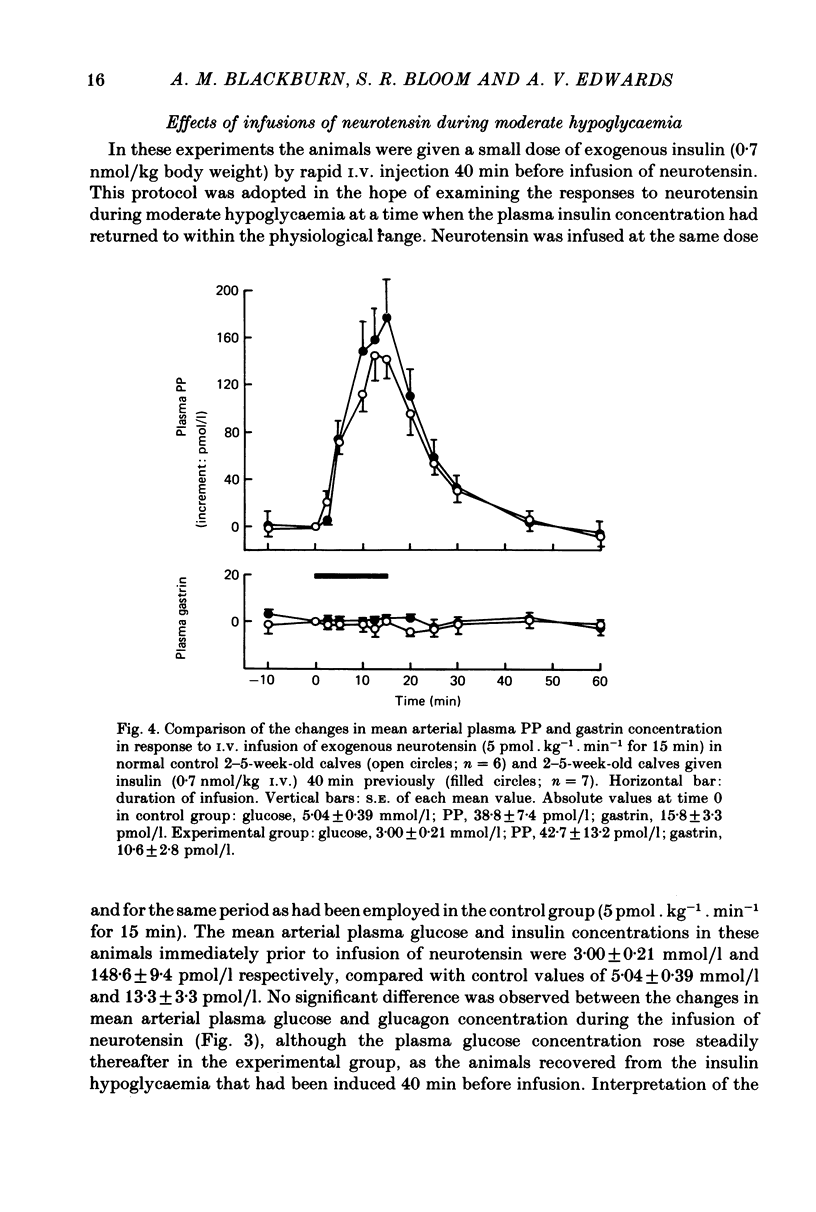
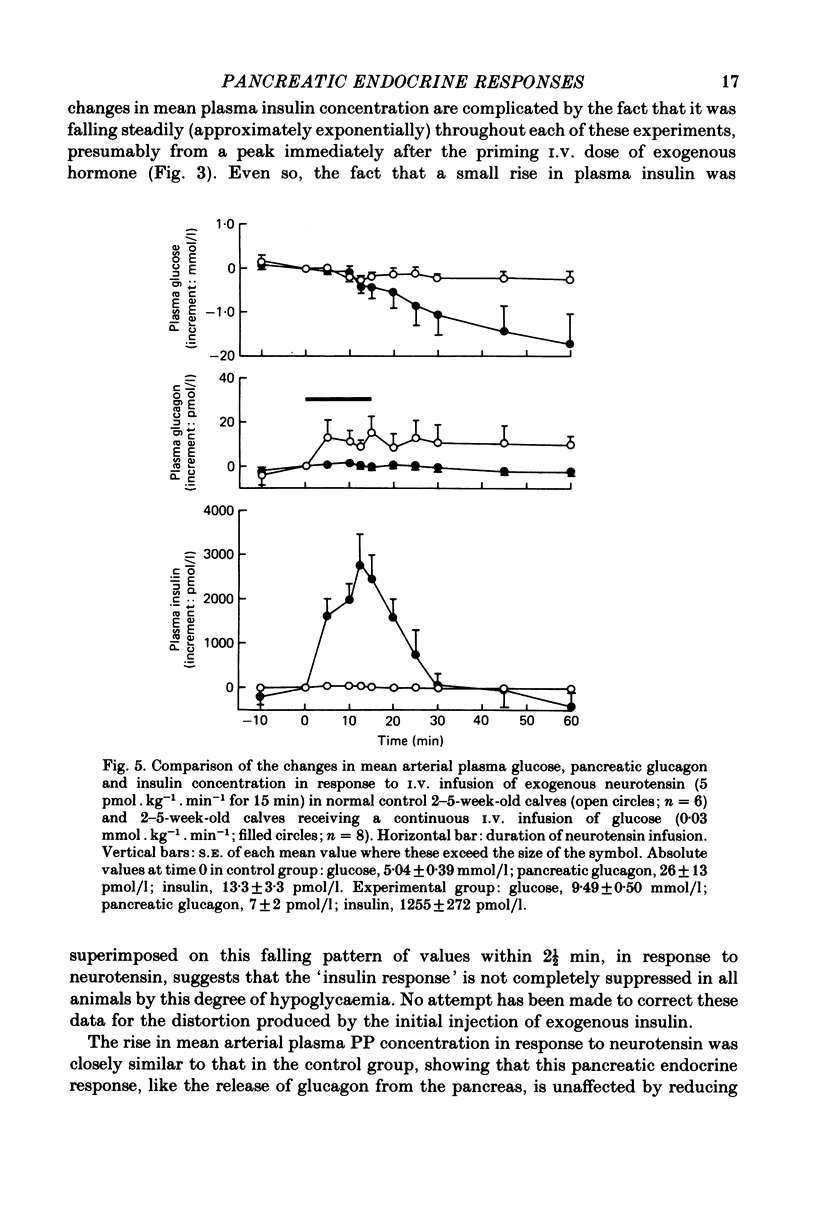
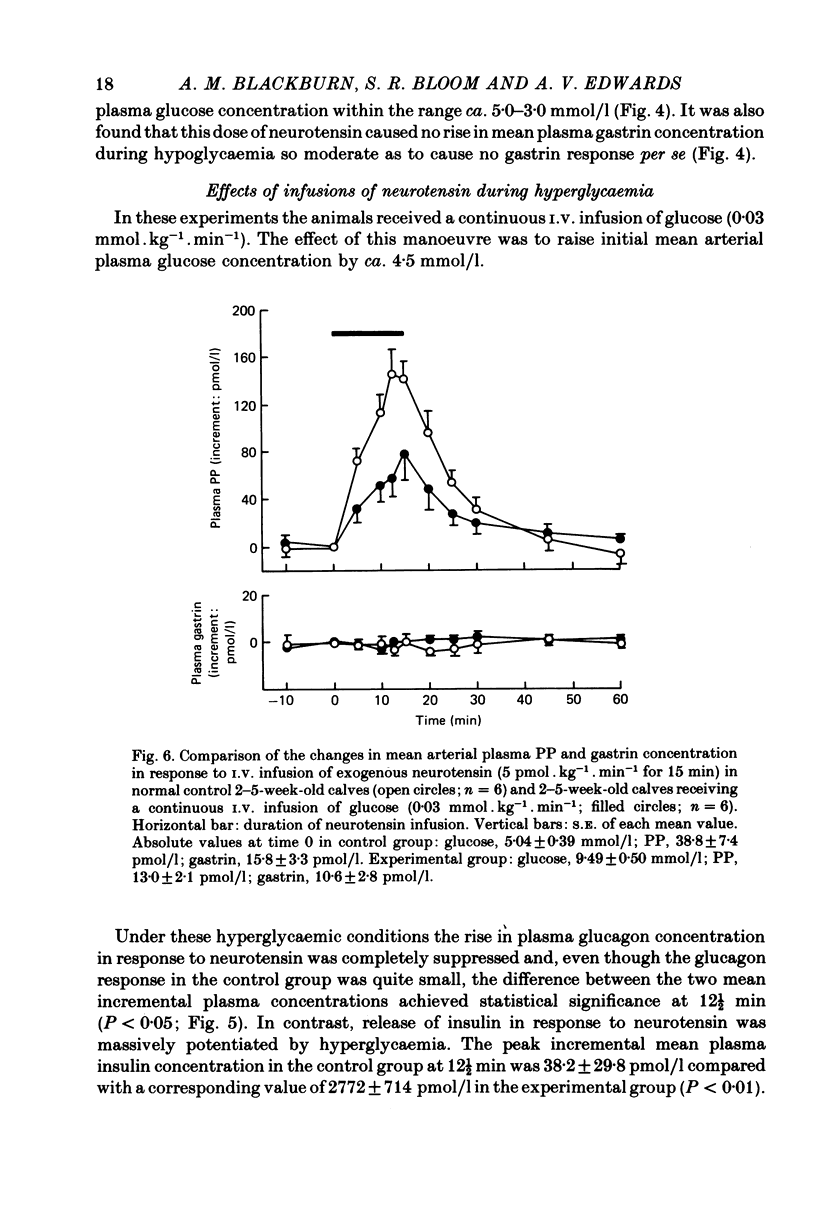
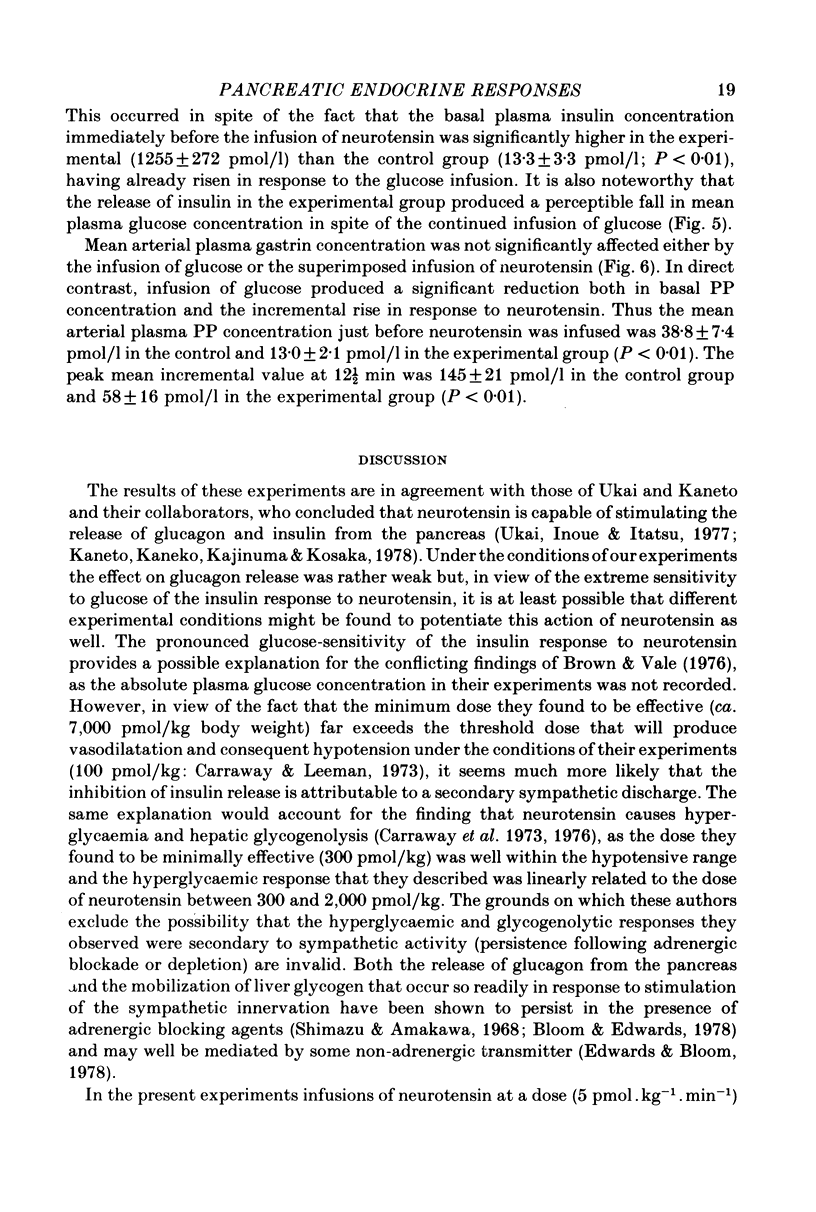

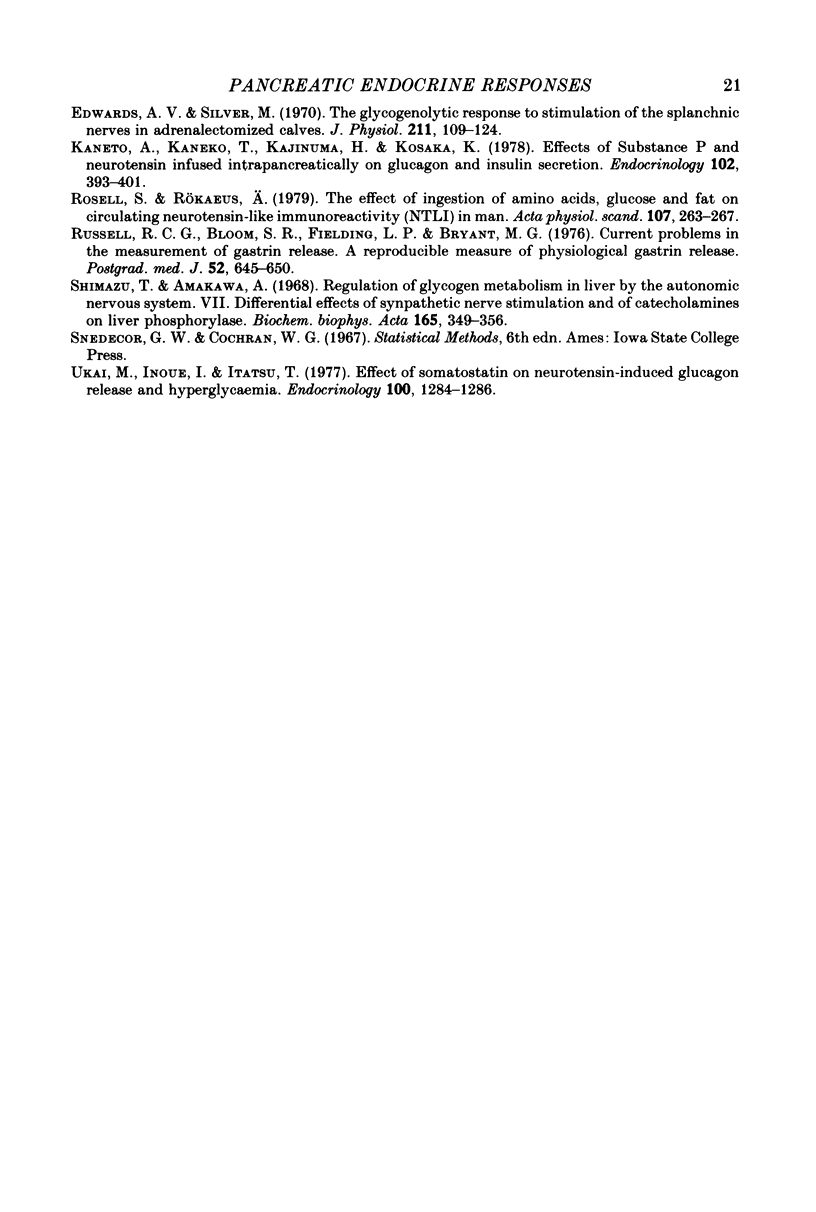
Selected References
These references are in PubMed. This may not be the complete list of references from this article.
- Adrian T. E., Bloom S. R., Bryant M. G., Polak J. M., Heitz P. H., Barnes A. J. Distribution and release of human pancreatic polypeptide. Gut. 1976 Dec;17(12):940–944. doi: 10.1136/gut.17.12.940. [DOI] [PMC free article] [PubMed] [Google Scholar]
- Albano J. D., Ekins R. P., Maritz G., Turner R. C. A sensitive, precise radioimmunoassay of serum insulin relying on charcoal separation of bound and free hormone moieties. Acta Endocrinol (Copenh) 1972 Jul;70(3):487–509. doi: 10.1530/acta.0.0700487. [DOI] [PubMed] [Google Scholar]
- Assan R., Slusher N. Structure-function and structure-immunoreactivity relationships of the glucagon molecule and related synthetic peptides. Diabetes. 1972 Aug;21(8):843–855. doi: 10.2337/diab.21.8.843. [DOI] [PubMed] [Google Scholar]
- Blackburn A. M., Bloom S. R. A radioimmunoassay for neurotensin in human plasma. J Endocrinol. 1979 Nov;83(2):175–181. doi: 10.1677/joe.0.0830175. [DOI] [PubMed] [Google Scholar]
- Bloom S. R., Edwards A. V. Certain pharmacological characteristics of the release of pancreatic glucagon in response to stimulation of the splanchnic nerves. J Physiol. 1978 Jul;280:25–35. doi: 10.1113/jphysiol.1978.sp012370. [DOI] [PMC free article] [PubMed] [Google Scholar]
- Bloom S. R., Edwards A. V. The release of pancreatic glucagon and inhibition of insulin in response to stimulation of the sympathetic innervation. J Physiol. 1975 Dec;253(1):157–173. doi: 10.1113/jphysiol.1975.sp011185. [DOI] [PMC free article] [PubMed] [Google Scholar]
- Bloom S. R., Edwards A. V., Vaughan N. J. The role of the sympathetic innervation in the control of plasma glucagon concentration in the calf. J Physiol. 1973 Sep;233(2):457–466. doi: 10.1113/jphysiol.1973.sp010317. [DOI] [PMC free article] [PubMed] [Google Scholar]
- Brown M., Vale W. Effects of neurotensin and substance P on plasma insulin, glucagon and glucose levels. Endocrinology. 1976 Mar;98(3):819–822. doi: 10.1210/endo-98-3-819. [DOI] [PubMed] [Google Scholar]
- Carraway R. E., Demers L. M., Leeman S. E. Hyperglycemic effect of neurotensin, a hypothalamic peptide. Endocrinology. 1976 Dec;99(6):1452–1462. doi: 10.1210/endo-99-6-1452. [DOI] [PubMed] [Google Scholar]
- Carraway R., Leeman S. E. The isolation of a new hypotensive peptide, neurotensin, from bovine hypothalami. J Biol Chem. 1973 Oct 10;248(19):6854–6861. [PubMed] [Google Scholar]
- Edwards A. V., Silver M. The glycogenolytic response to stimulation of the splanchnic nerves in adrenalectomized calves. J Physiol. 1970 Nov;211(1):109–124. doi: 10.1113/jphysiol.1970.sp009269. [DOI] [PMC free article] [PubMed] [Google Scholar]
- Edwards A. V. The sensitivity of the hepatic glycogenolytic mechanism ot stimulation of the splanchnic nerves. J Physiol. 1972 Jan;220(2):315–334. doi: 10.1113/jphysiol.1972.sp009709. [DOI] [PMC free article] [PubMed] [Google Scholar]
- Kaneto A., Kaneko T., Kajinuma H., Kosaka K. Effects of substance P and neurotensin infused intrapancreatically on glucagon and insulin secretion. Endocrinology. 1978 Feb;102(2):393–401. doi: 10.1210/endo-102-2-393. [DOI] [PubMed] [Google Scholar]
- Rosell S., Rökaeus A. The effect of ingestion of amino acids, glucose and fat on circulating neurotensin-like immunoreactivity (NTLI) in man. Acta Physiol Scand. 1979 Nov;107(3):263–267. doi: 10.1111/j.1748-1716.1979.tb06472.x. [DOI] [PubMed] [Google Scholar]
- Russel R. C., Bloom S. R., Fielding L. P., Bryant M. G. Current problems in the measurement of gastrin release. A reproducible measure of physiological gastrin release. Postgrad Med J. 1976 Oct;52(612):645–650. doi: 10.1136/pgmj.52.612.645. [DOI] [PMC free article] [PubMed] [Google Scholar]
- Ukai M., Inoue I., Itatsu T. Effect of somatostatin on neurotensin-induced glucagon release and hyperglycemia. Endocrinology. 1977 May;100(5):1284–1286. doi: 10.1210/endo-100-5-1284. [DOI] [PubMed] [Google Scholar]


